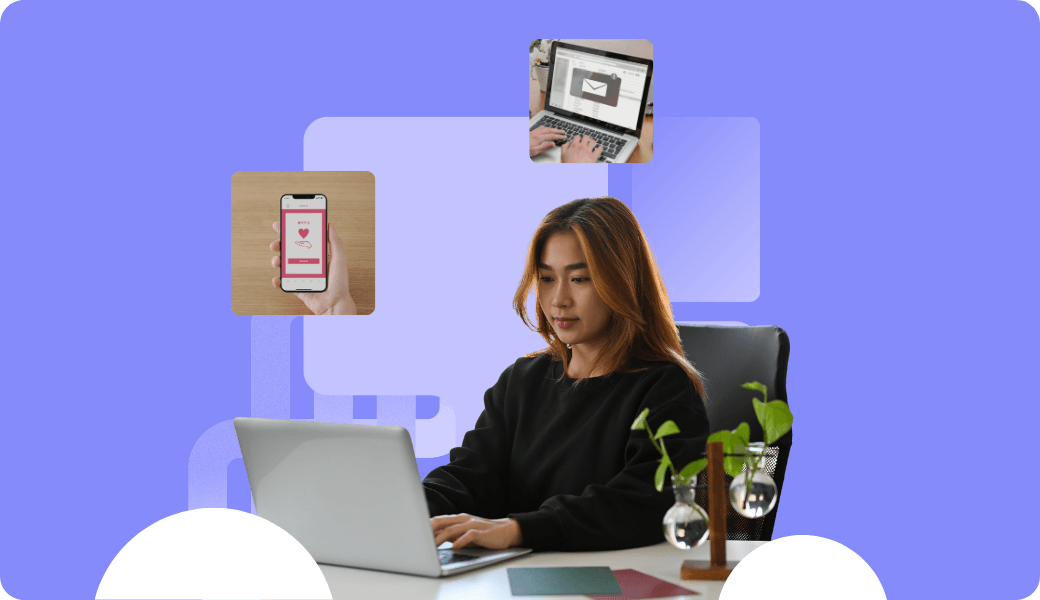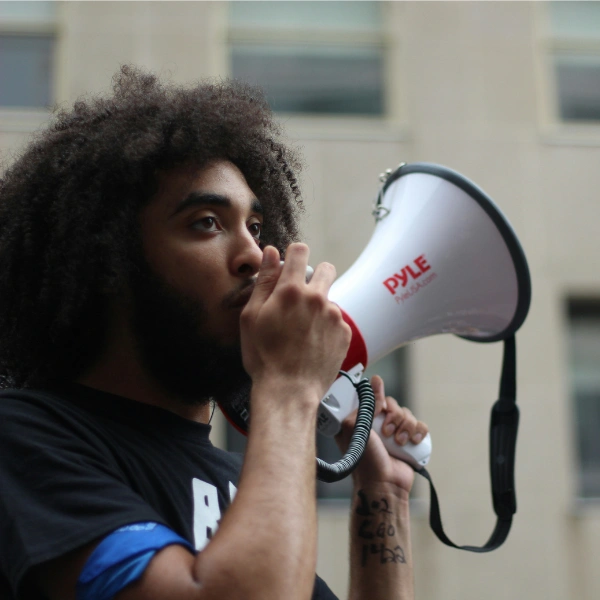Email in the Supporter Journey: Beyond Opens and Blasts


Email is one of the most powerful tools nonprofits have because it reaches supporters directly around what they care about.
Email bridges the stages of the journey—awareness, interest, engagement, conversion, and commitment—and keeps supporters moving forward with your mission. When done well, each message feels like an invitation to engage.
The trouble is that too often email gets used like a megaphone instead of a conversation.
Inboxes are already jammed. Think about your own habits. You’ve probably deleted a few emails today without even glancing at them. Or you realized weeks later an email was in a “promotions” folder in your inbox that you didn’t know existed. Your supporters are no different. If what you send feels generic, it won’t get read.
And the issue usually isn’t the email channel or tool itself. It’s the approach. As Jeanne Jennings puts it, too many nurture efforts slip into “lazy marketing,” where emails are pushed out instead of relationships being built (MarTech). Supporters want to feel like people, not line items. Your email strategy should reflect that.
Think About How Supporters Actually Interact with You
Imagine this: a supporter sees a video on Facebook, clicks through to your site, and sees a promotion for an impact story. They read the story and sign up for your newsletter, then they get a welcome email, later receive a webinar invite, attend the webinar, are invited to donate, and receive a “thank you” text after making a gift. Whew!
To your supporter, that’s one seamless experience—not a string of disconnected channels. That’s your digital ecosystem at work delivering an omnichannel experience. Each touchpoint centers the user and is responsive to the user’s actions and behaviors. Every touchpoint is consistent and feels like part of the same story.
This is the same as having a human-to-human conversation. You change your tone, topic, and phrasing in response to how the person is reacting.
Email is the glue in this experience.
The gentle follow-up after social sparks curiosity.
The nudge that brings someone back to your site.
The steady presence that builds trust over time, so when someone is ready to give, volunteer, or advocate, they already feel connected.
This kind of relationship doesn’t start the day of a big campaign. It starts months earlier with welcome notes, “thank you’s,” invitations to share about themself, and impact stories that show supporters they matter. Those small, steady touches make every other channel more effective.
Show Them You Know Them
Personalization is more than a first name in the subject line. It’s about showing supporters you see what they care about.
- If someone signs a petition, acknowledge the petition topic or name in your “thank you” and share a clear next step.
- If a subscriber always clicks on a certain type of story, give them more of that content, not just general updates. Or show those stories first in your newsletter to these users.
- If a donor always donates to the same program, reference that program in your outreach to them.
- If a donor gives every December, recognize the pattern and invite them to make a recurring December gift.
Segmentation is how you do this at scale. As we’ve shared in Seven Ways to Segment Your Email List, grouping people by behavior, interest, or giving history makes sure the right message gets to the right person at the right time.
This isn’t a “nice to have.” It’s the difference between being relevant or being ignored.
Usability: Respect Their Experience
Your supporters are also consumers, and they bring expectations from the platforms they use every day like Netflix, Spotify, and Amazon. They’re used to smooth, mobile-first, no-fuss experiences.
Nielsen Norman Group’s research defines usability as how easy it is to skim, understand, and act, and it’s often the line between an email that gets read and one that gets trashed.
So, keep it simple:
- Make sure your content respects people’s time (i.e., it better be worth sending).
- Use clean, scannable layouts.
- Make sure your templates look great on mobile.
- Use clear, direct CTAs. In our own testing, we’ve seen that buttons consistently outperform text links, making it easier for supporters to spot the action you want them to take.
- Content is what draws people in, but experience is what makes it easy for them to stay. When valuable information is paired with a simple, frictionless design, your emails stop feeling like noise and start building stronger relationships.
Measure Your Impact
Open rates can look nice, but they don’t tell you if your emails are working. So, what metrics matter?
M+R’s Benchmarks report showed that nonprofits raise an average of $2.63 in revenue per subscriber from email in 2024 (M+R).
Here are the KPIs worth tracking:
- Click-through rate: Are people actually engaging?
- Email conversions: Are they donating, signing up, or volunteering?
- Revenue per subscriber: Is email driving dollars or just clicks?
- Contact list health: Are you keeping people engaged or losing them to churn? Keep an eye on the number of people engaged (i.e., clicking and converting) in email in the last 3-6 months.
- Journey progression: This isn’t one number you can pull, but rather a mix of metrics that help you see if supporters are moving forward with you. For example, are first-time subscribers opening and clicking? Are donors giving a second gift or upgrading to recurring? Are long-time supporters staying on your list year after year? Together, these signals show whether people are progressing through the funnel—from awareness, to engagement, to conversion, to loyalty.
These are the measures that tell you if your emails are building real, lasting relationships.
Start with Strategy, Then Leverage Technology
Everything here—personalization, segmentation, KPIs—starts with strategy. Technology and data can’t replace that work, but they can amplify it.
Nonprofits now have access to marketing technology that can automate segmentation, deliver personalized content, track journeys, and connect data across channels. The key isn’t to use everything at once, it’s to align tools with your strategy so tech supports your goals.
If your strategy is about turning first-time donors into loyal ones, tech can automate your welcome series, surface relevant stories, and track whether people donate again. If your goal is to reduce donor churn, your platform can help spot disengaged subscribers and test reactivation campaigns.
It can sound like a lot, but you don’t need to do it all at once. Think of it like building in layers: start with strategy, then use technology to scale.
6 Ways to Strengthen Your Email Strategy
- Think about user journeys. Make email part of a connected experience across social, your website, and donation forms.
- Design for usability. Keep layouts clean, mobile-friendly, and easy to act on.
- Personalize with purpose. Leverage user-centric segmentation to send content that feels human and relevant.
- Measure what matters. Focus on KPIs tied to impact—clicks, conversions, revenue, and retention.
- Pair strategy and technology. Strategy sets the vision; technology makes it possible to scale and personalize.
- Deliver value, not blasts. Every email should feel useful—whether it’s impacted a supporter made possible, a clear next step, or an invitation to share feedback. When emails provide value and invite engagement, they naturally build trust and loyalty instead of just ticking a box.
The Bigger Picture
Email is the bridge that connects everything else you’re doing. It carries your supporters along your journey, moving them from curiosity to commitment.
When your email strategy is rooted in personalization, usability, meaningful KPIs, and supported by the right technology, you move beyond “just another message” and become part of a trusted relationship.
Because your mission deserves more than open rates. It deserves supporters who feel connected, respected, and inspired to act.
Curious how your email strategy fits into the bigger supporter journey? Let’s talk.
Thanks! You’ll hear back within 48 business hours
In the meantime, why not check out our latest case study?

Whether you need help with a project, want to learn more about us, or just want to say hi, you’ve come to the right place.



